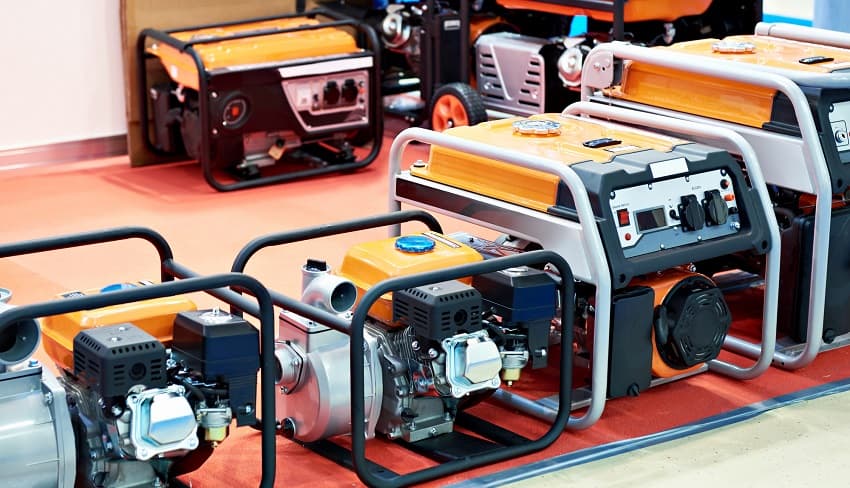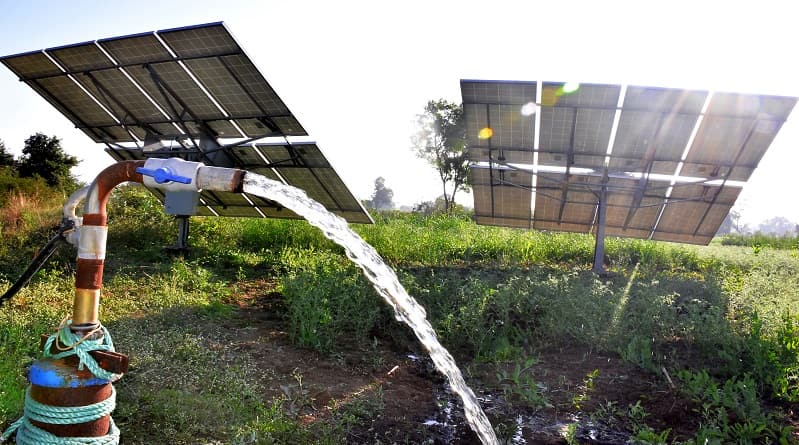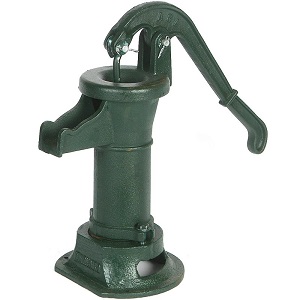If you’re going off-grid, you’ll need a water source, usually in the form of a well or borehole.
That’s all well (excuse the pun) and good when you’ve got the power to pump water from it, but if the grid goes down, you’re effectively upstream without a paddle.
Don’t despair – there are several ways to get water from your well without electricity – it just takes a little preparation and forethought.
Table of Contents
7 Ways To Access Your Well Water Without Electricity
#1 Generator

Although only 5% of American homes have backup generators, they are one of the best ways to ensure consistent power regardless of grid problems or extreme weather conditions.
While a dual fuel generator may provide the most cost-effective solution, few can produce the voltage needed for a deep well pump to operate.
For deep well pumps, a diesel generator will provide a more effective solution as they are both portable and powerful enough to produce the pump’s required 220v.
#2 Solar Pump

There are numerous different types of solar well pumps available, the best of which can pump water from depths of 600’ or more.
A surface solar pump is a viable option for shallow wells and to move water from your storage tank to your home. For deeper wells, you’ll need a submersible solar pump.
The best solar well pumps can run off batteries as well as sunlight, making them a suitable option for accessing water during extreme weather conditions, as well as during a power outage.
On our small-holding, a submersible solar well pump pushes water to a storage tank at the top of the hill; we then rely on gravity to transport that water down to the house.
The benefit of this two-pronged approach is that we’re not solely reliant on the solar pump, and therefore sunlight, but can get a consistent water supply straight to the house regardless of the weather or the national electricity supply.
#3 Wind-Powered Pump

A wind turbine isn’t something you can always rely on to provide water when you need it as you can be sure the wind will drop the instant you decide you need it, but you can use it to pump water to a holding tank which can then be transported to your home by gravity.
Many home wind turbines can be hooked up to solar panels, providing two alternative power sources for those inevitable emergencies. Read more about hybrid wind and solar systems.
Although you’ll need to invest a few hundred dollars in a good-quality wind turbine, once in place, it costs very little to run or maintain.
If you lack the funds to buy a wind turbine but have an abundance of DIY know-how, you could make your own out of PVC piping, and an old car fan as demonstrated in the video below.
#4 Hand Pump

One of the simplest ways to get water from a well when the power’s down is via a hand pump. The best hand pumps can be alongside your electrical submersible pump, making it easy to swap from one.
Hand pumps are particularly effective for shallow wells and can draw water from a depth of 25’ or less without undue muscle fatigue on your behalf.
Accessing water that’s over 30’ down requires significantly more muscle power, which is why some deep well hand pumps can be linked to a windmill or operated via a foot valve.
A shallow well hand pump is simple to install and relatively affordable. It’s well worth paying that little bit extra for a high-quality pump, however, as you’ll be relying on it in your hour of need.
While you can pick up a pitcher pump for as little as $50, it’s more advisable to invest a few hundred dollars in getting a more reliable, better quality model, like the Pressurized Sealed-Top Water Pump from Lehman’s.
Deep well hand pumps cost considerably more, especially the Bison Stainless Steel Deep Well Hand Pump that can draw water up from depths of 300’. You may well need to be a potential contestant for the World’s Strongest Man competition to achieve this, but it is possible!
The best deep well hand pumps come with a lifetime warranty, require little maintenance and no priming, meaning that you can install them and forget about them until an emergency arises.
The main benefit of a hand well pump is that it requires nothing more than muscle power to operate it, which means you’ll have access to water in all weather conditions. If you opt for a solar pump, you’ll be reliant on sunlight whereas, with a generator, you need fuel.
The hand pump needs nothing at all, making it by far the most sustainable and reliable approach.
#5 Well or Sleeve Bucket
The sleeve bucket is the simplest and cheapest way to get water from your well without electricity. Also known as torpedo or cylinder buckets, the modern-day “well bucket is simply a long, skinny bucket that can be lowered into the narrow confines of a well casing to bring water to the surface.”
A high-quality sleeve bucket from Lehman’s costs less than $100, is made of galvanized steel, and can hold nearly 2 gallons of water. It has a handy device that enables you to discharge water from the bottom, rather than attempting to up-end it and empty it from the top.
If you’ve got access to some rope and PVC piping, you can easily make your own sleeve bucket which, while not as sleek or voluminous as a bought model, will still do the job effectively. Find out how to make your own PVC well bucket below.
The only problem with using a well bucket is that you’ll need to remove your submersible pump to get access. With most pumps, this is a fairly simple operation but it’s inconvenient nonetheless and not something you need to do if you have a hand pump.
#6 High Lifter Or Hydraulic Ram Pump
Depending on the topography of the land, you could use a hydraulic ram pump or a high lifter to access your well water. Both these pumps use downhill water pressure to push the water up to a higher point than the original source.
These gravity-fed water systems are easy to install and maintain but are only effective where there is a continuous supply of water and room to install the pump at least a foot and a half below that source.
While hydraulic ram pumps need a higher flow rate and can be rather noisy, high lifters can cope with as little as one gallon per minute and operate in virtual silence. As they are both self-powered, they don’t require any fuel, solar power, or electricity, so can operate regardless of power outages or severe weather conditions.
#7 Build An Emergency Pump
While I don’t feel my DIY skills would be up to the task of making a sleeve bucket, let alone an emergency well pump, there are plenty of people who’ve done just that and are willing to share their designs and methods.
The simplest type of pump to make is one that, like the pitcher hand pump, uses suction to draw water up. Designs like these are cheap and easy to make but will only work effectively on shallow wells.
For deeper wells, a vacuum pump is more effective and, although these are slightly more complicated and expensive to build, there are some informative online tutorials that give a complete list of materials and step-by-step instructions on how to complete the project.
Conclusion
If you’ve already got alternative energy sources, like wind or solar, on your property, getting water from your well when the grid goes down isn’t too much of a problem.
When severe weather conditions, like heavy rain or gale-force winds, disrupt your electricity supply, however, they’re liable to play havoc with those alternative sources as well, leaving you at the top of the well without any water.
The most reliable and sustainable ways of getting water from your well, therefore, are those that rely on gravity, like the hydraulic ram or high lifter systems, or those that need only muscle power.
While sleeve buckets are reliable and easy to use, in many cases, you must remove your submersible pump before you can start accessing the water, which is why the hand pump is the best method of getting water without electricity.
You can install a hand pump alongside your existing electrical pump so you can switch easily from one to the other without having to uninstall anything at all. A top-quality deep well hand pump can draw water from depths of up to 300’, keeping dehydration at bay whatever the weather.
Read more about the different types of well pump.











































